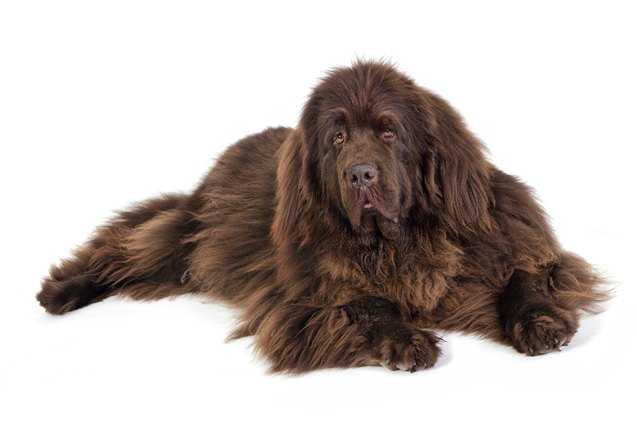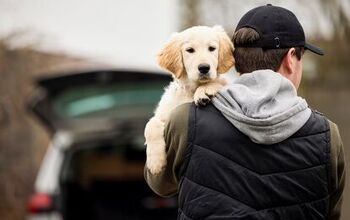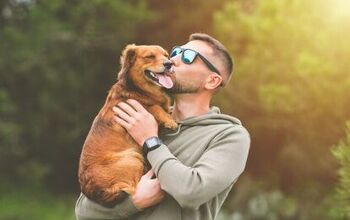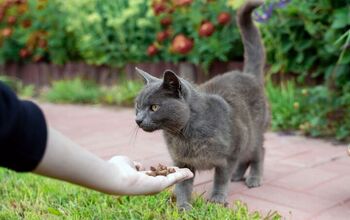Newfoundland


About Newfoundland
Talk about a big dog, eh? Boasting a love of water, children and people in general, the Newfoundland dog is one of the cuddliest things to come out of Canada. This breed is a lot of things: calm, sweet, patient, amiable, gentle, mellow, loyal, and affectionate, which make it a great pet the whole family will fall in love with.
An extra-large dog with an extra-big heart, the Newfoundland will complete a household – you’ll wonder how you ever lived with it before. The perfect companion for hunters and fishers, this noble dog not only keeps you company, but also likes to be put to work. Read on to find out more about this breed.
Boasting a love of water, children and people in general, the Newfoundland dog is one of the cuddliest things to come out of Canada.
Originating during the 1700s, Newfoundlands are named for Newfoundland, Canada, its place of birth. Originally used a fishing dog, the Newfoundland was often used as a water retriever. Sporting heavy double coats and a sturdy build, the Newfoundland was made to be used in and around the Atlantic Ocean. On land, this breed was used as guard dogs and pack dogs. Newfoundland dogs were used by people across North America, and eventually it made its way into Europe. You’ll often see the Newfoundland dog at obedience and water trials. This breed also makes an excellent rescue dog.
Newfoundland dogs were bred from Labradors, Great Pyrenees, and Tibetan Mastiffs. It boasts the look of a Great Pyrenees with the abilities and coloration of the Labrador.
The Newfoundland was recognized by the AKC in 1886.
With a dog this big, you can expect a hearty appetite. Feed your Newf (as it is lovingly referred to) a diet of a diet rich in taurine, omega-3 fatty acids, arginine, calcium, phosphorous, and iodine. Fish is a great source for all these nutrients, and Newfoundland dogs love it (not surprising, seeing where the breed originated from).
An extra-large dog with an extra-big heart, the Newfoundland will complete a household.
Good news – you’ll find Newfoundlands easy to train. You’ll get the best results by using positive reinforcement training methods. Because it is a sensitive breed, loud, raised voices are discouraging, so use repetition and positive rewards for the fast results.
When you start, training should only be taken on by one person initially. Other family members can learn to work with the dog later on. Be sure to make training sessions short and schedule them a few times a day, rather than one long stretch.
Male Newfoundlands weigh 130 to 150 pounds, while females weigh 100 to 120 pounds.
Even though it is big, the Newfoundland is a great house pet. If you have a small home, your dog will adapt and is careful of objects in its way. Calm and gentle, the Newfoundland dog is patient, intelligent, and will protect its family by standing between them and a potential threat. Since the breed is extremely loyal, the Newfoundland does not do well in situations where it is removed from its family. It will even grieve the loss of another family member or pet. The Newfoundland will get along well with other animals and dogs, no matter what size they are. This breed is easy to train – in fact, it might even housetrain all on its own. Sensitive to harsh noises, the Newfoundland does well in a quiet, positive environment.
Bring on the kids, because the Newfoundland is excellent with children. It will interact patiently and calmly, and will protect the children. It will play with anyone, travels well and take part in almost any activity with the family.
This large purebred breed is no stranger to disease. The Newfoundland is prone to Sub-Aortic Stenosis, hip dysplasia, elbow dysplasia, gastric torsion, and several common eye problems. As well, the Newfoundland can suffer from Von Willebrand’s Disease, an abnormal bleeding disorder, as well as epilepsy.
Newfoundland dogs have a life expectancy of 9 to 10 years.
Newfoundlands are known to be one of the lazier breeds, so it’s important that you monitor your dog’s exercise. Regular exercise will keep health problems such as obesity at bay. The Newfoundland dog does best with short periods of play and exercise, but don’t be afraid to take your dog for a slow jog. Since it loves the water, take your Newfoundland out for a swim. This breed doesn’t do well in the heat, so watch for signs of heat stroke. Long periods of exercise, especially in the first two years of life, are not recommended. This is because the Newfoundland dog doesn’t mature until the age of 2 and can sustain damage to its body from extended physical exertion.
Calm and gentle, the Newfoundland dog is patient, intelligent, and will protect its family by standing between them and a potential threat.
The American Kennel Club says this about the breed: “A large dog and a true workhorse, the Newfoundland is a master at long-distance swimming and has true lifesaving instincts in the water. He is large and strong, possessing a heavy coat to protect him from icy waters. Equally at home in the water and on land, today’s Newfoundland competes in conformation, obedience, agility, tracking, draft and water tests, and carting.”
Outfitted with a double coat, the Newfoundland’s fur is medium length and straight or slightly wavy. Its under and outer coat have oils to keep dirt from penetrating the coat, and its tail, legs and belly often have longer hair. Its coat is usually white, black and gray, or brown or black.
Use a stiff bristled brush or a pin brush for grooming, as its thick double coat can easily become matted. To ensure this doesn’t happen, brush your Newfoundland several times a week. Its undercoat will shed in the spring and fall.
Newfoundland puppies grow very quickly and can be quite uncoordinated (which is super cute to watch). Be patient as your puppy learns to control its body for commands like “sit” and “lay down.”
Photo credit: Keith Gentry/Shutterstock

Amy Tokic, Editor of PetGuide.com, is a passionate animal lover and proud pet parent of Oscar, a Shih Tzu/Chihuahua cross, and Zed, a Japanese Chin. Her love of animals began in kindergarten, when she brought her stuffed dog Snoopy into class with her every day. Now, she writes about her adventures in pet ownership and tirelessly researches products, news and health related issues she can share with other animal enthusiasts. In her free time, Amy loves perusing used book and record stores, obsessing over the latest pet products available and chasing squirrels with wild abandon (a habit attributed to spending too much time with her pooches).
More by Amy Tokic

























